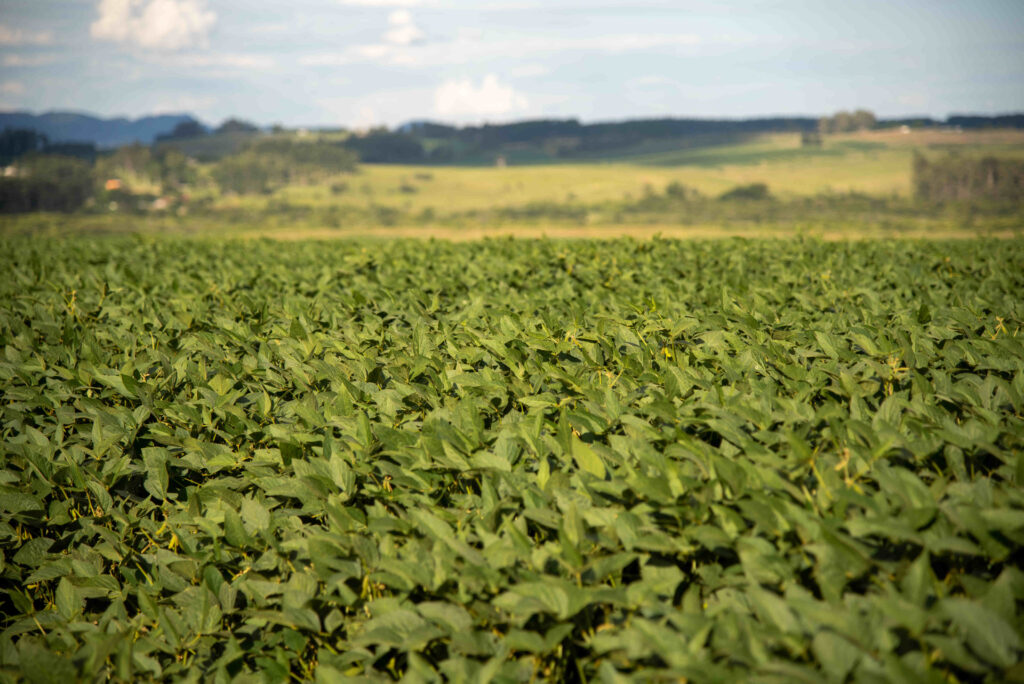Over the past three decades, Brazil has experienced a significant increase in crop production and exports, mainly driven by the expansion into the Cerrado biome (the center-west region of Brazil). Despite this rapid growth in crop production, the Cerrado’s competitiveness is hindered by high domestic transportation cost, which are up to three times higher than those in the Southeast-South regions. This is due to both the long farm-to-port distances and, more importantly, the underdeveloped inland railway network. These high transportation costs have become a bottleneck for the continued expansion of crop production in the Cerrado biome, reducing farming profitability and limiting the affordability of inputs needed to boost yield further.
This situation could change in the next decade with the implementation of Brazil’s National Logistics Plan [1] 2035 (PNL2035). According to PNL2035, Brazil aims to extend the country’s total railway length by up to 91%, primarily connecting the core Cerrado biome with the north and southeast coasts. How PNL2035 will reduce transportation cost and consequently influence Brazil’s crop production is an important question for stakeholders in Brazil and its competitors in the global crop trade.
In a recent paper published in Science of Total Environment (Wang et al., 2024), Purdue researchers in the Center for Global Trade Analysis and Brazilian colleagues quantitatively evaluated the impact of Brazil’s PNL2035 on transportation cost, crop production, land use and environmental implications. By combining Geographic Information System (GIS) analysis with observed transportation cost data, the authors developed an innovative approach to estimate local level transportation costs and modes (railway or road) based on the existing transportation network.
Their findings show that in the baseline year (2017), farm-to-gate transportation costs [2] in Mato Grosso (the major soybean-producing state in Brazil, located in the core Cerrado biome) ranged from $33/t to $112/t, with an average cost of $68/t. This is much higher than the transportation costs in Southeast-South Brazil ($30/t and less). Upon the completion of PNL2035, the expansion of railway infrastructure is projected to reduce transportation costs in the core Cerrado by 10% to 23% (22% in Mato Grosso). In contrast, the transportation cost reduction in Southeast-South Brazil will be only 6% and less, as those regions already have well-developed transportation infrastructure in the baseline year.
Furthermore, the reduction in transportation costs impacts the agricultural system through an economic model developed by the authors, which simulates Brazilian crop production and input use at a gridded cell level [3]. As the Cerrado biome benefits from greater reductions in transportation costs due to PNL2035, it gains a relative advantage in farming through increased of farm-gate crop prices. As a result, model simulations indicate that the national crop production pattern will shift further from Southeast-South Brazil to Cerrado. This shift will lead to cropland expansion and yield growth, particularly in Mato Grosso.
This study provides several important implications for the future of Brazilian agriculture. For crop producers in Brazil, the results indicates that PNL2035 will enhance the competitiveness of the Cerrado biome in global crop trade by resolving the bottleneck of high transportation costs, thereby contributing to continued growth in crop production in this region. Although the traditional Southeast-South region will also benefit from PNL2035, local crop producers should prepare for increased competition as inland producers gain an advantage from better connectivity to domestic and international markets. Finally, PNL2035 will make Brazil more competitive at the national level. Crop producers from other countries should consider the impact of improved Brazilian transportation infrastructure in their future projection and planning.
For more information about this paper, refer to Zhan Wang, Geraldo B. Martha Jr., Jing Liu, Cicero Z. Lima, and Thomas W. Hertel. “Planned expansion of transportation infrastructure in Brazil has implications for the pattern of agricultural production and carbon emissions.” Science of The Total Environment 928 (2024): 172434. Available at https://doi.org/10.1016/j.scitotenv.2024.172434.
[1] “Plano Nacional de Logística” in Portuguese.
[2] In this study, the transportation cost is measured as “the lowest cost from the farm to any crop exporting ports”, so the unit of transportation cost is distance-free.
[3] In this model, the resolution of grid cell is five-arcminute square, which is about 7000 – 8000 hectares.
About GTAP
The Global Trade Analysis Project (GTAP) is a global network of researchers and policymakers dedicated to conducting quantitative analysis of international policy issues. Coordinated by the Center for Global Trade Analysis, which was founded in 1992 by Professor Thomas W. Hertel and housed in the Department of Agricultural Economics at Purdue University, GTAP aims to improve the quality of quantitative analysis of global economic issues within an economy-wide framework.
GTAP has become a common “language” for those conducting global economic analysis. GTAP data was pivotal in several key studies evaluating the WTO’s Uruguay Round Agreement and has continued to be central in numerous high-profile economic analyses. The center offers a variety of products, including data, models and resources for multi-region, applied general equilibrium analysis of global economic issues. It also organizes courses and conferences, undertakes research projects and publishes the Journal of Global Economic Analysis. GTAP is a truly global project, supported by a consortium of international and national agencies and a vast network of researchers worldwide. For more information, visit https://www.gtap.agecon.purdue.edu/.




